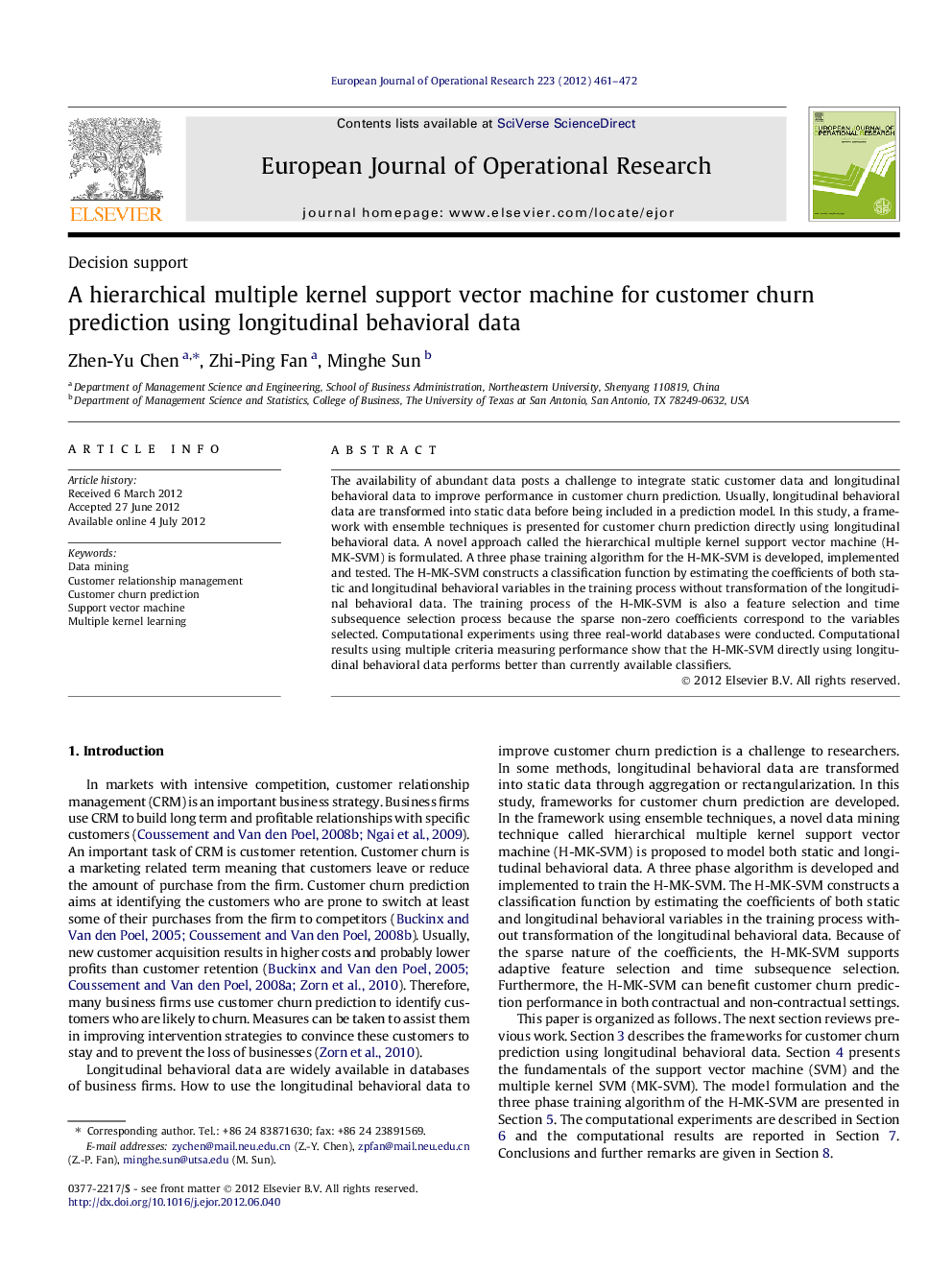| Article ID | Journal | Published Year | Pages | File Type |
|---|---|---|---|---|
| 480253 | European Journal of Operational Research | 2012 | 12 Pages |
The availability of abundant data posts a challenge to integrate static customer data and longitudinal behavioral data to improve performance in customer churn prediction. Usually, longitudinal behavioral data are transformed into static data before being included in a prediction model. In this study, a framework with ensemble techniques is presented for customer churn prediction directly using longitudinal behavioral data. A novel approach called the hierarchical multiple kernel support vector machine (H-MK-SVM) is formulated. A three phase training algorithm for the H-MK-SVM is developed, implemented and tested. The H-MK-SVM constructs a classification function by estimating the coefficients of both static and longitudinal behavioral variables in the training process without transformation of the longitudinal behavioral data. The training process of the H-MK-SVM is also a feature selection and time subsequence selection process because the sparse non-zero coefficients correspond to the variables selected. Computational experiments using three real-world databases were conducted. Computational results using multiple criteria measuring performance show that the H-MK-SVM directly using longitudinal behavioral data performs better than currently available classifiers.
► A framework with ensemble techniques is presented for customer churn prediction directly using longitudinal behavioral data. ► A H-MK-SVM is proposed for customer churn prediction using both static and longitudinal behavioral data. ► A three phase training algorithm is developed and implemented to train the H-MK-SVM. ► The H-MK-SVM supports the adaptive variable and time subsequence selection.
